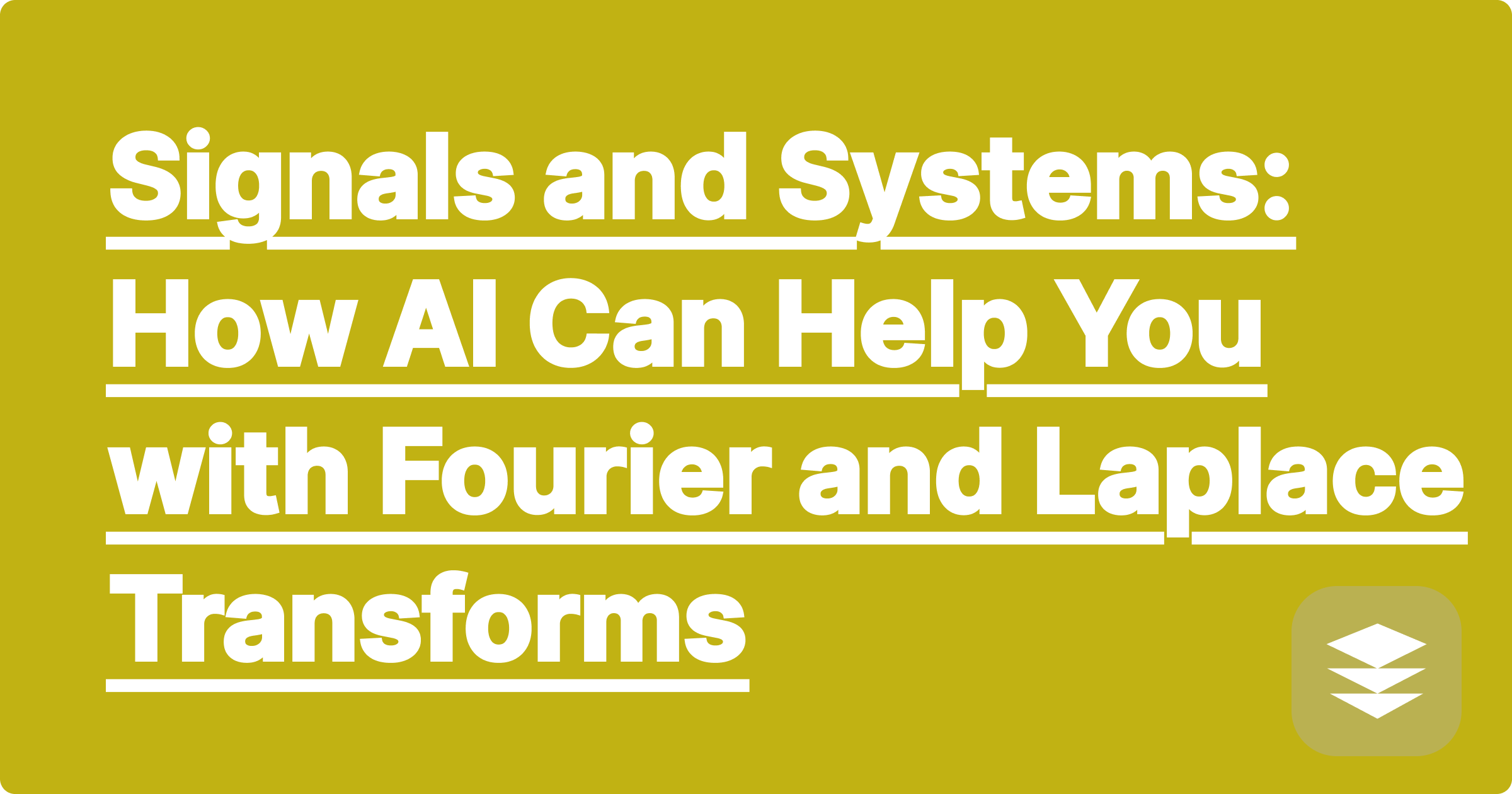
Signals and Systems is a fascinating subject that forms the bedrock of modern communications, image processing, and control theory. It's also where many engineering students encounter some of the most mathematically intensive concepts of their undergraduate career: the Fourier Transform and the Laplace Transform.
These transforms are powerful tools for analyzing signals in different domains. But the process of calculating them—especially for non-trivial signals—involves complex integration, contour integrals, and a deep understanding of complex numbers. A single mistake in the math can lead to a completely incorrect result, and getting effective help with Signals and Systems problems can be tough.
What if you had a personal tutor that could not only solve these complex integrals but also show you every single step of the process? An AI-powered Fourier transform calculator does exactly that, acting as a powerful tool to help you master the mathematics and build intuition.
The core difficulty of this course lies in the transforms themselves.
Manually performing these transformations is a critical skill, but it's also where students spend the most time and feel the most frustration.
An AI tool like GPAI Solver is the perfect partner for this course. It's not just a calculator; it's a step-by-step explainer that helps you navigate the complex mathematics.
Let's say you need to find the Fourier Transform of a rectangular pulse, rect(t).
[Image: A screenshot from the GPAI Solver interface showing the integral for a Fourier transform being solved, with each step of the integration and simplification clearly laid out. Alt-text: A Fourier transform calculator showing step-by-step integration.]
This is often the harder part, especially when partial fraction expansion is needed. Imagine you have an F(s) and need to find f(t).
MethodTextbook ExamplesGPAI SolverProblem VarietyLimited to the specific examples in the book.Can solve any problem you provide, offering limitless practice.
Step DetailOften skips intermediate algebra steps.Shows every single step, from integration to simplification."What If" ScenariosStatic. You can't change the problem.Interactive. You can slightly change the problem ("What if the pulse was wider?") and see how the transform changes.SpeedSlow. You must find a similar example.Instant. Provides immediate help for your specific problem.
"I understood the idea of the Fourier transform, but I always got lost in the integration. I started using GPAI Solver to check my work. Seeing the step-by-step process for a dozen different problems helped me build a real mechanical skill for it. My exam grade showed the difference."
By using an AI to handle the most complex parts of the mathematical process, you can focus on the bigger picture. You can start to build an intuition for how the properties of a signal in the time domain (e.g., sharp edges, periodicity) relate to the properties of its transform in the frequency domain (e.g., wide spectrum, discrete harmonics).
A: Yes. The mathematical principles are similar. You can provide a discrete-time signal or system and ask the AI to perform the appropriate summation or transformation, showing the steps involved.
A: Yes. After calculating a Fourier Transform, you can prompt the AI: "Plot the magnitude and phase spectrum for this result." It will generate the two graphs needed to visualize the signal in the frequency domain.
A: Create a two-pronged attack. Use GPAI Cheatsheet to upload your notes and create a "master sheet" of all the important transform pairs and properties (e.g., time-shifting, convolution). Then, use GPAI Solver to work through as many practice problems from your textbook and past exams as possible, using it to verify your answers and get unstuck.
The transforms in Signals and Systems are a gateway to advanced engineering. Don't let the mathematical complexity be a barrier. With an AI assistant as your guide, you can conquer the calculations, visualize the results, and build the deep, lasting understanding you need to succeed.
Ready to master the math behind signals?
[Try GPAI Solver today. Get step-by-step help with Fourier and Laplace transforms and solve your toughest Signals and Systems problems. Sign up for 100 free credits.]
Circuit Analysis Made Simple: An AI Assistant for Nodal and Mesh Analysis
Understanding Electromagnetics: How AI Can Visualize Fields and Waves
Digital Logic Design: From Truth Tables to Karnaugh Maps with AI
Signals and Systems: How AI Can Help You with Fourier and Laplace Transforms
Your Guide to Semiconductor Physics: How AI Simplifies Band Diagrams
How to Write Verilog or VHDL Code Faster with an AI Assistant
Mastering Microelectronics: An AI Tool for Amplifier and Filter Design
The ECE Student's Ultimate Cheatsheet: Combining Circuits, Signals, and Code
Can AI Help Me with My PSpice / LTspice Simulation?
How to Prepare for the FE Electrical and Computer Exam with AI